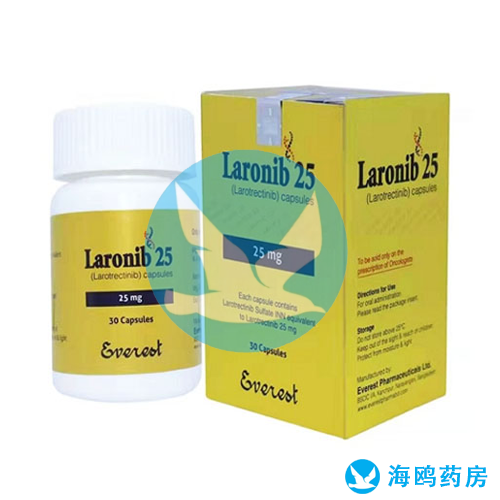Larotrectinib Treats NTRK Gene Fusion-Positive Cancers Successfully With Low Rates of Adverse Effects
Larotrectinib (Vitrakvi) is a tyrosine kinase receptor (TRK) inhibitor indicated for the treatment of metastatic or unresectable neurotrophic receptor tyrosine kinase (NTRK) gene fusion-positive solid tumors in adults and children.1 NTRK gene fusion is an actionable oncogenic driver, a gene variation that promotes initiation and continuation of tumor growth.

Patients are eligible for treatment based on history of unsatisfactory prior treatment and presence of NTRK (1, 2, or 3) gene fusion in tumor samplings.
Dosage
Larotrectinib is available as a 25 mg capsule, 100 mg capsule, and a 20 mg/ml oral solution. Adults and children with body surface area (BSA) ≥1m2 should take 100 mg twice daily until disease progression or adverse effect (AE) intolerability. Pediatric patients with BSA ≤1m2 should take 100 mg/m2 twice daily.
FDA approval
Larotrectinib is the first drug to receive accelerated FDA approval (November 26, 2018) for patients of all ages based on a common molecular marker, independent of tissue origin for targeted therapy.
The approval of larotrectinib was based on data from 3 trials, 2 of which were cohorts conducted in 2018 (N=55 in primary group and N=67 in secondary).
The total response rate was 81% (63% partial response, 17% complete response) over 24 different types of NTRK fusion-positive tumors. Most patients (75%) in the primary group stayed disease-free for 1 year after treatment.
AEs and Drug Interactions
The 2018 New England Journal of Medicine (NEJM) studies mentioned above found larotrectinib to be safe and tolerable, with only 1 of the 122 patients discontinuing treatment due to AEs.2 The most common AEs noted were fatigue, anemia, elevated liver enzymes, weight gain, and neutropenia. Only 8 (15%) of the 55 patients in the initial group had their doses reduced due to elevated liver enzymes.
Clinicians should monitor liver tests (ALT and AST) every 2 weeks during the first month of treatment then monthly thereafter. Patients with existing moderate to severe hepatotoxicity should begin therapy at half of the typical starting dose.
Patients should avoid strong CYP3A4 inhibitors (e.g., clarithromycin, grapefruit juice) while taking larotrectinib or a clinician must reduce the dose by 50% to prevent toxicity. CYP3A4 inducers (e.g., carbamazepine, St. John’s Wort) can reduce the efficacy of larotrectinib. Clinicians should increase the larotrectinib dose by 50% if these drugs cannot be avoided.
Pregnancy/Lactation
Larotrectinib can cause fetal harm and should not be taken during pregnancy. Females of reproductive age should use effective contraception during treatment and for 1 week after last dose. Clinicians should advise women not to breastfeed during therapy and for 1 week after last larotrectinib dose.
Conclusion
Larotrectinib is a highly tolerable and effective NTRK-gene fusion positive targeting agent that treats a vast variety of solid tumors among adults and children.
Reference
https://www.pharmacytimes.com/view/larotrectinib-treats-ntrk-gene-fusion-positive-cancers-successfully-with-low-rates-of-adverse-effects
Disclaimer:《Larotrectinib Treats NTRK Gene Fusion-Positive Cancers Successfully With Low Rates of Adverse Effects》Edited and sorted by Seagull Pharmacy's editors. Please contact us in time if there is any infringement. In addition, the suggestions for drug usage, dosage and disease mentioned in the article are only for medical staff's reference, and can not be used as any basis for medication!